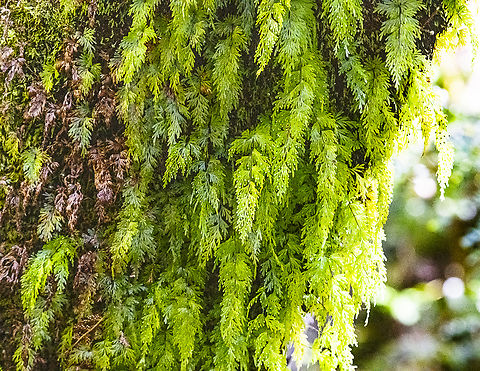
Appearance
The narrow filmy-fern is distinct by its long thin, creeping rhizome, membranous fronds, that grow in moist areas. Fronds are pale grey-green, and the entire plant is glabrous . Fronds are pendant and up to 15 cm long; stipe to 20–70 mm long, very thin, black; rachis winged in the uppermost section of the frond; lamina 1-pinnate 1–2-pinnatifid, pale green, and up to 100 mm in length and 10–25 mm wide, with no toothed margins. Solitary sori borne at apex of segments, and sunken at the base but not tubular; a whorl or rosette of bracts surrounding the inflorescence or at the base of an umbel, shaped like a rhomboid, apex rounded or obtusely angled; receptacle slender, included. Indusium completely covers the sporangia, and splits apart when spores are ready to be dispersed by wind.Naming
''Hymenophyllum'': Membranous leaf, from the Greek hymen and phullon.''rarum'': thin-leaved; from the Latin ''rarus''.
Distribution
The narrow filmy-fern is found in rainforests, forming patches on rocks and is often epiphytic on trees and tree ferns in moist gullies. It is highly dispersed throughout the tropical and south temperate zones occurring across Australia in New South Wales and Victoria. This species can also be found in Tasmania and on the Bass Strait Islands, While being highly dispersed throughout New Zealand, occurring on North and South Islands as well as, Stewart, Chatham and Auckland Islands.Occurring in coastal to montane habitats, this species is common in rainforests, scrub, shaded cliff faces or amongst boulders and damp gullies. Often growing amongst other filmy-ferns, this species closely resembles is relatives ''H. cupressiforme'' and ''H. peltatum''. As with H. peltatum, the pinnae are often divided on only one side. Unlike both these species, however, the pinnae of ''H. rarum'' do not have serrated margins.
Habitat
The narrow filmy-fern is found in rainforests, forming patches on rocks and is often epiphytic on trees and tree ferns in moist gullies. It is highly dispersed throughout the tropical and south temperate zones occurring across Australia in New South Wales and Victoria. This species can also be found in Tasmania and on the Bass Strait Islands, While being highly dispersed throughout New Zealand, occurring on North and South Islands as well as, Stewart, Chatham and Auckland Islands.Occurring in coastal to montane habitats, this species is common in rainforests, scrub, shaded cliff faces or amongst boulders and damp gullies. Often growing amongst other filmy-ferns, this species closely resembles is relatives ''H. cupressiforme'' and ''H. peltatum''. As with H. peltatum, the pinnae are often divided on only one side. Unlike both these species, however, the pinnae of ''H. rarum'' do not have serrated margins.
Evolution
The family Hymenophyllaceae is a largely successful family under the division of Pteridophytes . This family is commonly referred to as the filmy fern family, with around 670–700 named species, only 131 are accepted.Divided into two genera, ''Hymenophyllum'' and ''Trichomanes''. The Genera are separated based on the sorus and gametophyte structures, particularly the indsium structure and the receptacle.
The Australian plants of H. rarum differ from their New Zealand counterparts with widely spaced pinnae rather than imbricating pale green pinnae. The Sori of the Australian ''H. rarum'' are not wholly sunken within the pinnae nor are they bound to the uppermost segments of the uppermost pinnae.
Members from the genus ''Hymenophyllum'' are all small, thin and delicate. They are either epiphytic plants or rock plants, forming dense patches or mats along rainforest floors. Members of this family most commonly occur in moist habitats with few members being able to withstand dryer conditions, in which they are able to later 'revive' themselves when moisture becomes readily available.
References:
Some text fragments are auto parsed from Wikipedia.